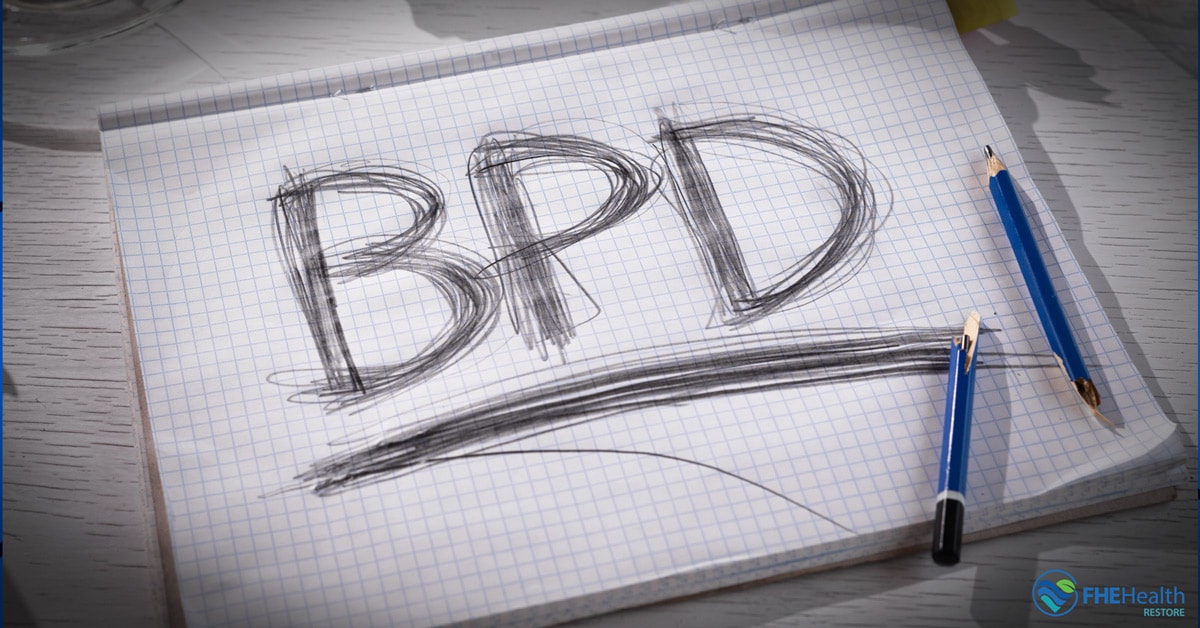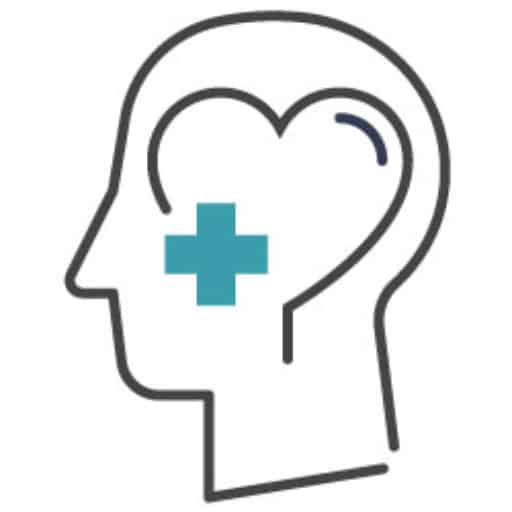Personality disorders cause people to think and behave differently than expected, causing significant distress or making it more challenging to function. These disorders affect approximately 8% of the global population, although some personality disorders are more common than others. Borderline personality disorder, also known as BPD, is one of the 10 personality disorders listed in the Diagnostic and Statistical Manual of Mental Disorders, Fifth Edition (DSM-5). Keep reading to learn more about BPD and discover how it affects a person’s relationships and ability to maintain employment.
Overview of Borderline Personality Disorder (BPD)
Borderline personality disorder makes it extremely difficult for an individual to regulate their emotions. BPD also causes intense mood swings, resulting in high levels of distress. Due to these intense mood swings, family members, friends, romantic partners and colleagues never quite know what to expect, making it difficult for a person with BPD to maintain positive relationships.
Another common symptom of BPD is seeing things in extremes. In other words, it’s difficult for someone with BPD to see “shades of gray” in personal situations. For example, if a friend, colleague or loved one does something they don’t like, a person with BPD may view them as “evil” rather than recognizing that good people sometimes do bad things.
Over time, this fear of abandonment feeds a vicious cycle. The person with BPD worries about being abandoned, causing them to act impulsively, and their impulsive behavior then drives away the people they love. About 1.4% of American adults have borderline personality disorder. In addition to the difficulties described above, BPD may cause the following symptoms:
- Distorted self-image
- Self-harming behavior
- Intense anger
- Dangerous behaviors (e.g., binge eating, reckless driving)
- Suicidal threats
- Ongoing feelings of emptiness
Distinguishing BPD From Other Personality Disorders
The 10 personality disorders listed in the DSM-5 have some overlapping symptoms, but distinguishing BPD from other mental health conditions is important to ensure the individual receives appropriate treatment. To receive a BPD diagnosis, an individual must demonstrate a chronic pattern of instability in their interpersonal relationships.
Almost everyone has had at least one relationship end badly; that doesn’t mean they have BPD or another acute personality disorder. As part of their impulsive behavior, people with BPD may end relationships over slight disagreements or perceived insults.
The DSM-5 criteria for BPD also include “marked impulsivity” beginning in early adulthood. This impulsivity is characterized by at least five of the following:
- Severe dissociative symptoms or temporary paranoid ideation associated with stress
- Ongoing feelings of emptiness
- Self-harm, suicidal threats or suicidal behavior that recurs over time
- Poor sense of self or unstable self-image (chronic)
- Repeated efforts to avoid abandonment; these efforts must be deemed “frantic” to qualify as a symptom of BPD
- Intense anger, which may take the form of physical fights, temper tantrums or an inappropriate level of anger based on the circumstances
- Unstable mood, such as intense irritability lasting a few hours
- Significant impulsivity in at least two areas of life, such as drunk driving, reckless spending or risky sexual behavior
- Unstable relationships characterized by alternating periods of intense admiration and intense anger toward other people
Causes of and Risk Factors for BPD
Researchers don’t know exactly what causes BPD and other acute personality disorders; however, there are several risk factors associated with this mental health condition. For example, BPD is much more common in people who experience childhood trauma and abuse. The Cleveland Clinic reports that up to 70% of people with the disorder have a history of physical, sexual or emotional abuse. A child’s living environment also has a big impact on their risk of developing BPD when they get older, as BPD is more common in people who had poor attachment with their mothers, witnessed their parents engaging in substance abuse or had poor family boundaries.
The risk of BPD also depends on a person’s genetic makeup and brain structure. Many people with BPD have at least one other person in their family with the disorder, indicating genetic variations play a role in its development. Brain structure changes may also affect how a person behaves or expresses emotions.
Diagnosis and Treatment Options for BPD
Talk therapy, or psychotherapy, is the most common treatment option for BPD. During this type of therapy, a trained professional helps the individual with BPD work through their intense emotions. Participating in talk therapy may be helpful for reducing anger or getting control of the impulsive behavior that makes it difficult for people with BPD to maintain positive relationships.
An individual with BPD may also benefit from dialectical behavior therapy (DBT) or transference-focused therapy (TFT). DBT helps participants develop mindfulness skills, which may help them cope with negative emotions and avoid the bursts of anger that can occur due to BPD. TFT gives participants a better understanding of their emotions, giving them greater insight into how their behavior affects others.
In some cases, people with BPD use medications to control their intense mood swings and impulsive behaviors. The right medication depends on the individual’s symptoms and medical history, so it’s important to work closely with a health care professional. Mood stabilizers and anticonvulsants are commonly used to manage BPD symptoms.
Impact of BPD on Relationships, Work and Society
BPD has a major impact on an individual’s personal and professional relationships. As noted previously, intense mood swings and uncontrollable anger make it difficult to have positive interactions with others. This may cause spouses, older children, significant others, parents and other loved ones to avoid spending time with someone with BPD. At work, BPD may cause someone to lash out at colleagues or get intensely angry over small disagreements, resulting in termination or other disciplinary measures.
BPD also impacts society, as people with this disorder may drive while intoxicated, engage in risky sexual behaviors or live outside their financial means. In some cases, this leads to legal consequences that increase the workload of prosecutors, judges and other court personnel.
The Need for Increased Awareness
Borderline personality disorder causes impulsivity and intense mood swings, which can interfere with personal and professional relationships. Unfortunately, not many people are aware of BPD and its effects. It’s important to increase awareness of the disorder to ensure people with BPD feel comfortable seeking treatment and working to manage their symptoms.
If you have BPD and need help recovering, Restore is ready to help. Call (877) 563-7752 to learn more.



